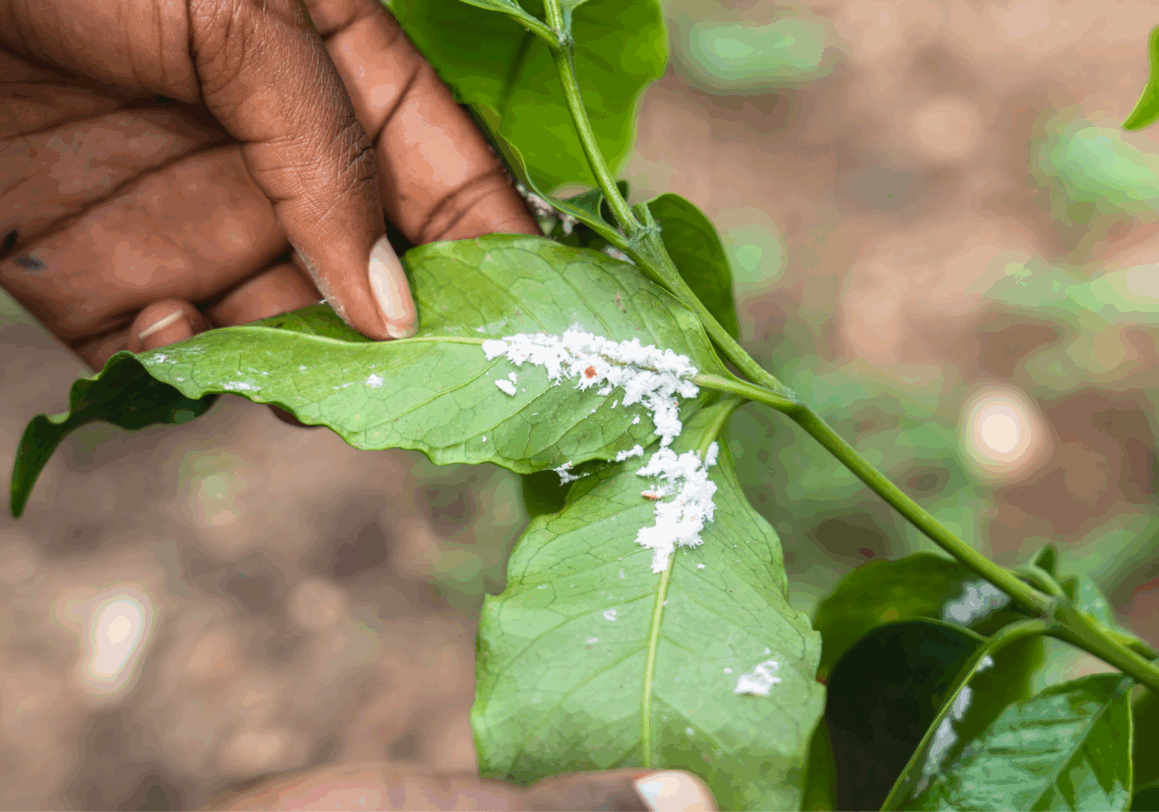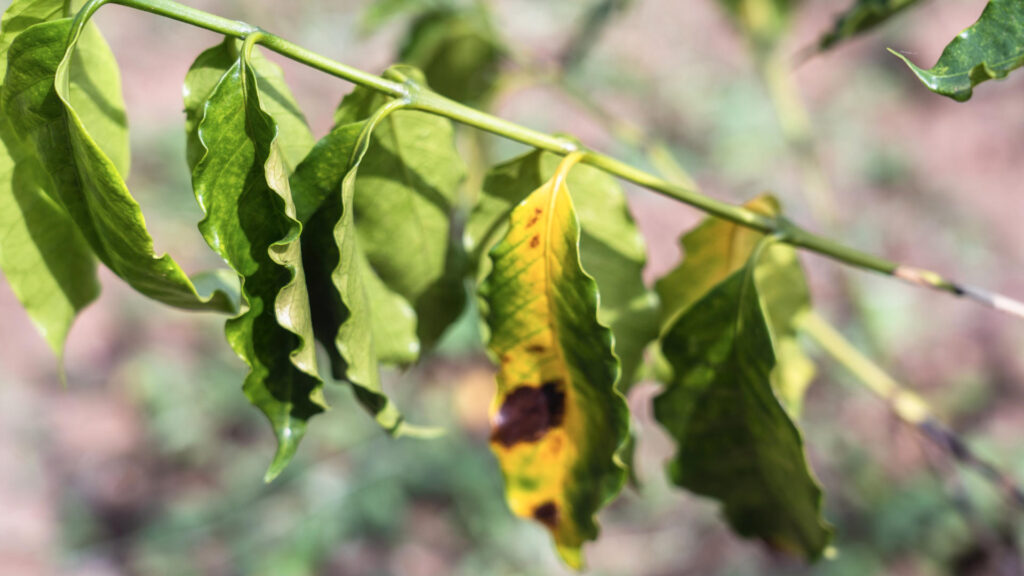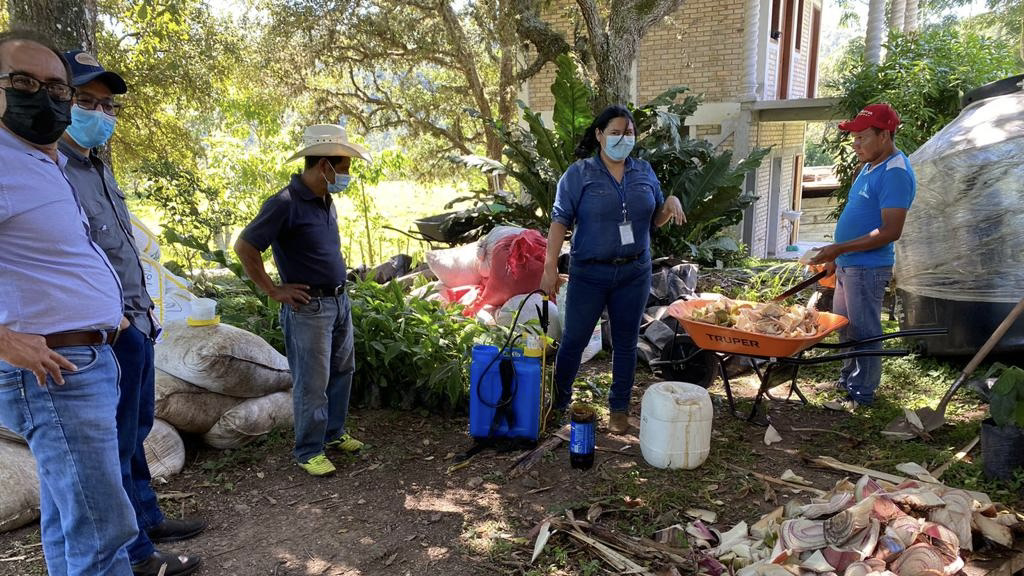Dear coffee sector, we need to talk about agrochemicals

When we talk about coffee production, we talk about the climate crisis, the matters of women and youth, the productivity and quality of crops, and the livelihood of smallholder farming families. But talking about all these very important topics, we oftentimes neglect one issue that plays a role in all those fields: agrochemicals.
The production of nitrogen-based fertilizers “is energy-intensive, requiring the burning of fossil fuels and after farmers apply these synthetic fertilizers to crops, chains of chemical reactions generate nitrous oxide, or N2O, a greenhouse gas.” (https://www.bloombergquint.com/onweb/synthetic-fertilizer-ammonium-nitrate-makes-climate-change-worse). At the same time, climate change has major effects on the interactions between the coffee tree and its pests and diseases. For instance, growth rates of pests and the number of generations they achieve per year; pest mortality due to low temperatures (or lack of it); or host susceptibility are all interlinked with the impacts of climate change. Disease epidemics are also strongly connected to climatic conditions and therefore some diseases may disappear or lose their predominance in a given coffee production system and new pathogens or new strains may become more important. Therefore, pest and disease pressure is likely to increase in many coffee regions which leads without appropriate knowledge on biological control mechanisms to an increase of pesticides use.
The World Health Organization has estimated a worldwide incidence of 3.000.000 cases of acute and severe poisoning of agrochemicals each year. 300.000 of these cases are fatal. Nearly all these deaths occurred in developing countries. The effortless availability of highly toxic pesticides in smallholder homes has made pesticides the most common remedy for suicide. Approximately one third of the deaths are due to occupational hazards, as the extensive use of pesticides exposes farmers to both long term and acute occupational health problems. In addition to this comes an even greater number of unreported cases of mild-to-moderate intoxication. Medical treatment in the rural areas is difficult since few medical resources are available.
The most vulnerable members of the family are most at risk of being harmed by pesticides. Often times, farming families store these extremely hazardous products without safety measures within their houses – stories of intoxication or death of children that drank by accident pesticides can be told from all coffee regions.


Many problems and risks accompany the use of agrochemicals
Most of the time, encounters with agrochemicals do not result in a sudden tragedy, but are not less fatal. Youths are often in charge of spraying the fields with pesticides, women later wash the clothes that are contaminated by agrochemicals. They do not use protective gear. When it is 30, 35 or 40 degrees Celsius outside, nobody wants to wear a suit, gloves and a mask. Furthermore, this protection gear is expensive, and many farmer families cannot afford it. They touch the substances with their bare hands, they breath in the fumes. They overuse then. On local markets in Uganda, you can find tomatoes spotted with white dots – remnants of pesticides applied. Customers prefer those fruits and vegetables believing white dots to be a sign of good quality, because lots of pesticides have been used and no pests have infested the product.
To save money, families reuse the empty containers of pesticides, cut them open and use them as tooth mugs or drinking cups. Waste water from washing the coffee beans is also usually contaminated with pesticides and simply dumped into the next stream – water that other people might drink.
Because many farmer families are quite poor, they purchase the cheapest agrochemicals, those that have long been prohibited in Europe and the US, but are still sold to countries like Brazil or Uganda. Local vendors sometimes mix their own pesticides and sell the dangerous substance in officially labeled containers.
Field staff of Hanns R. Neumann Stiftung (HRNS) – the implementing partner of the initiative for coffee&climate – around the globe observes such situations frequently.
Artificial fertilizers, another form of agrochemicals, are not as toxic to human health as pesticides, but their use leaves a huge carbon foot print. In Brazil, for example, some farms produce three, five or more tons of organic waste after processing the coffee beans. Instead of reusing this valuable waste, they dump it, which in the aftermath releases lots of methane into the air and residue of agrochemicals into the environment. We cannot fight climate change if we don’t tackle this issues in agriculture.


The application of pesticides is also an important topic for coffee roasting companies as well, because the use of agrochemicals directly influences their products. Nobody wants to call back tons of coffee beans because residues like for example glyphosate was found in them.
This short overview makes it obvious that we as a coffee sector need to strengthen our effort to provide information about the hazards of applying these products to farming families and support them with knowledge on how to safely use them and more important – what alternatives like Integrated Pest and Disease Management exist. Climate change is pushing this problem further down the spiral.
November – a month of awareness
For all those reasons, we at the initiative for coffee&climate are starting a month of awareness. We have decided to shed a light on this topic, that is essential to the wellbeing of smallholder families and their local environment. For us, this November is all about raising awareness of safe use and handling of agrochemicals and how we can support these families to reduce their vulnerability and hazards towards the application of these products. In cooperation with the Swedish Chemical Agency (Kemi) we have developed an action plan that integrates the families, their farmer organisations as well as the local suppliers of agrochemicals. The identification and evaluation of practices to ensure the safe use and handling of agrochemicals in coffee producing regions is an essential part of the work of our initiative.
Safe use…
To reduce their vulnerability, farmer families need to know how to use agrochemicals safely. That they are not to be used by or near children and pregnant women and need to be stored properly, far away from food, water, and the bathroom, not accessible by children, best in a locked, ventilated room.
And at the end of its use, farmers need to know how to safely dispose of the containers.
…and safer alternatives
But safer then using them is foregoing agrochemicals in coffee production. They are by far not as necessary as they are often used in growing coffee. There are safer and more traditional ways to fight against pest and diseases on coffee farms. But many smallholder farmers lack the knowledge of these traditional methods. That is why coffee&climate continuously tests innovative practices and approaches about culturally integrated pest and disease management that fits the special climate and environment of the region they live in. For example, to get rid of pests, they can use insect traps that attract and kill those flies that harm the coffee cherry. Branches and leaves that are infected by coffee rust should be cut and burnt immediately, so they do not attract more pests.
And organic waste from coffee production should not be dumped, but is a valuable resource. We are encouraging farmers to use their farm’s organic waste as a valuable resource from which for example Biochar can be produced in order to reduces the application of agrochemicals.
We do not condemn agrochemicals, but…
Forgoing agrochemicals means a lot more handy work. But in the end, it is more efficient and a lot healthier than using agrochemicals. And if a family manages a farm in an agroecological manner, they attract more predators of coffee pests, more birds, wasps and bees that help protect the coffee plants.
But coffee&climate does not condemn the use of agrochemicals in coffee production. That smallholder families are able to purchase external inputs is a sign of development. However, alternatives exist and we need to provide these families with all relevant information and knowledge to be able to apply them. And more important, we need to support coffee farming families to ensure a safe use and handling of agrochemicals – so that in a future stories of intoxication or death caused by these products – belong to the past.
Share your experiences with agrochemicals in the comments or get in touch with me with your questions.
Follow us during this Agrochemicals awareness month on the coffee&climate LinkedIn page and register to our Webinar “Unspoken Realities – About the safe use and handling of agrochemicals in the coffee sector” on Thursday, Nov 25 at 3:30 pm CEST.
